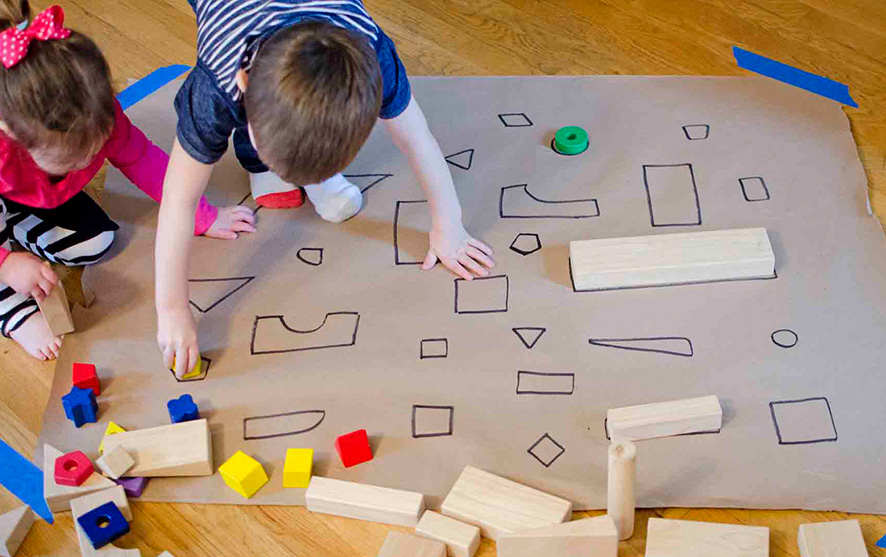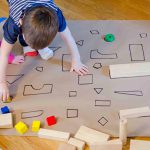Cranberry flapjack bars
Packed full of energy-inducing fruits and seeds, our cranberry flapjack bars are great for on-the-go […]
Read more

Your child will develop spatial awareness and be developing their understanding of different shapes and their properties, problem-solving skills and critical thinking. This experience is also great for developing mathematical vocabulary.
Have you exhausted your puzzles? Here’s a great way to get all the benefits of a puzzle, using objects you have around the house.
Collect an assortment (around 5 or 6 is ideal for this age group) of different shaped objects. These may be different toys your child uses such as a rectangular Lego piece, a cube-shaped wooden block, etc. Or you may use different items from around the house, e.g. cutlery, a key, fridge magnet, whatever you can find!
Draw around the outline of the shapes using a marker. Then present the shape board to your child, along with the objects and encourage them to match the object to its outlined shape.
Talk about the shapes as they explore them, commenting e.g. ‘This shape has a point here, what can you see that has a point like this?’ As your child matches the object to its outline, ask them what shape/shapes the object is made of? Name simple shapes such as circle/square/rectangle, but also include some objects such as a key that are harder to describe.
With any 3D shapes, talk about how they have a special name e.g. cube/cuboid, etc. but are made up of different shapes – can your child tell you which shape/shapes it is made of? E.g. A cuboid is made of rectangles and squares.